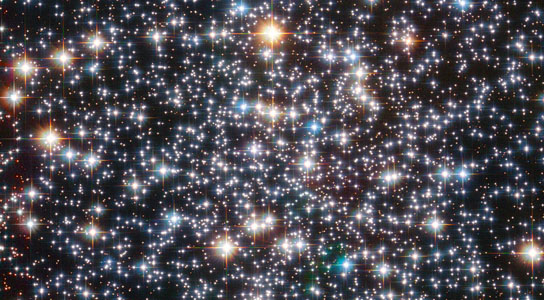This new image from Hubble shows an up-close look at the center of M4 or Messier 4, a global cluster located in the constellation of Scorpius roughly 7,200 light-years away.
This sparkling picture taken by the NASA/ESA Hubble Space Telescope shows the center of globular cluster M4. The power of Hubble has resolved the cluster into a multitude of glowing orbs, each a colossal nuclear furnace.
M4 is relatively close to us, lying 7,200 light-years distant, making it a prime object for study. It contains several tens of thousands stars and is noteworthy in being home to many white dwarfs — the cores of ancient, dying stars whose outer layers have drifted away into space.
In July 2003, Hubble helped make the astounding discovery of a planet called PSR B1620-26 b, 2.5 times the mass of Jupiter, which is located in this cluster. Its age is estimated to be around 13 billion years — almost three times as old as the Solar System! It is also unusual in that it orbits a binary system of a white dwarf and a pulsar (a type of neutron star).
Amateur stargazers may like to track M4 down in the night sky. Use binoculars or a small telescope to scan the skies near the orange-red star Antares in Scorpius. M4 is bright for a globular cluster, but it won’t look anything like Hubble’s detailed image: it will appear as a fuzzy ball of light in your eyepiece.
Image: ESA/NASA








 User Center
User Center My Training Class
My Training Class Feedback
Feedback













Comments
Something to say?
Log in or Sign up for free